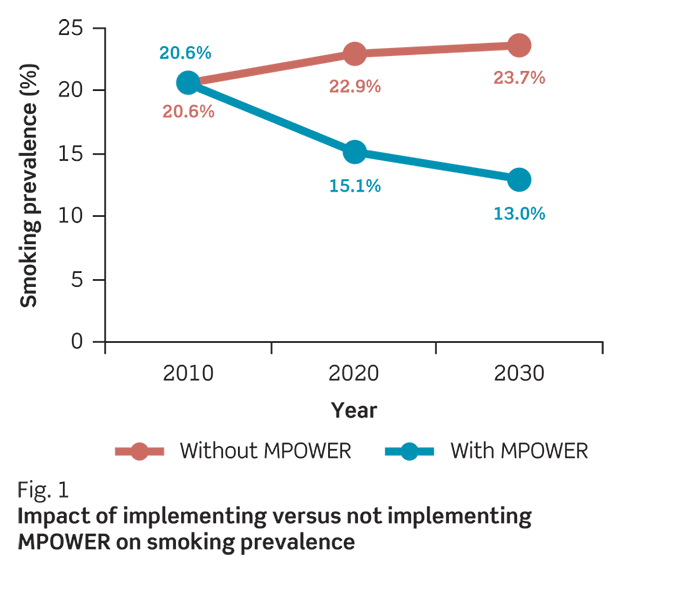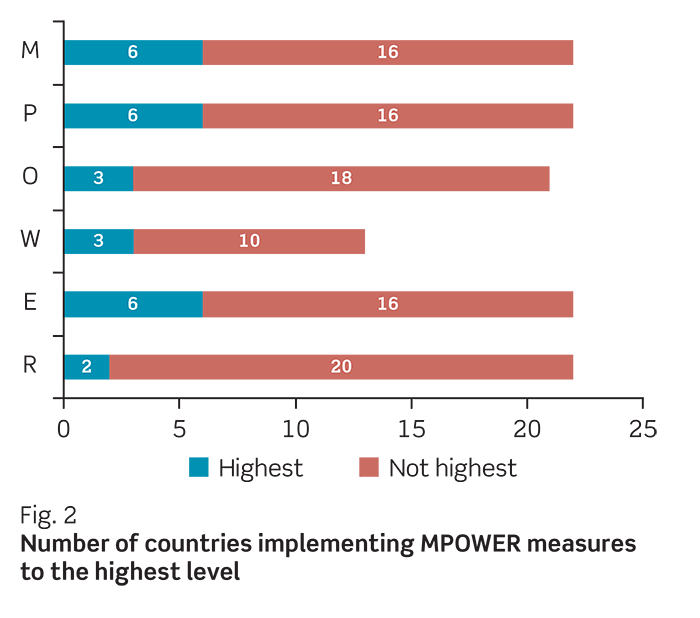MPOWER measures
In line with the WHO Framework Convention on Tobacco Control (WHO FCTC), WHO introduced the MPOWER measures in 2008. MPOWER are a set of six cost-effective and high impact measures that help countries reduce demand for tobacco. These measures include:
Monitoring tobacco use and prevention policies.
Protecting people from tobacco smoke.
Offering help to quit tobacco use.
Warning about the dangers of tobacco.
Enforcing bans on tobacco advertising, promotion and sponsorship.
Raising taxes on tobacco.
If fully implemented and enforced, the key WHO FCTC measures represented by MPOWER could reduce smoking prevalence in the Eastern Mediterranean Region (Fig. 1).

Statistical modelling shows that without implementation of the MPOWER measures, tobacco use may increase. Full implementation of MPOWER, including a 100% price increase in tobacco products, could reduce smoking prevalence by almost half (Fig. 2).

Today, more than half of all countries, with nearly 40% of the world’s population (2.8 billion people), have implemented at least one MPOWER measure to the highest level of achievement. Increasing tobacco tax and prices has proven to be one of the most effective, yet least utilized tobacco control measures that countries can use to address various issues. For example, by increasing prices, taxation protects the poor from exposure to a product that kills and causes disease. Taxation, in fact, is the most effective means to motivate current, mostly male, tobacco users to quit. This is especially so for lower income populations, and tobacco users in low- and middle-income countries, where 75% of smokers live. And by stopping people smoking, tobacco taxes also reduce exposure to second-hand smoke among non-smokers, including children and women.
MPOWER measures to reduce tobacco use








